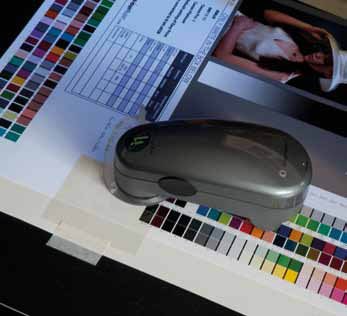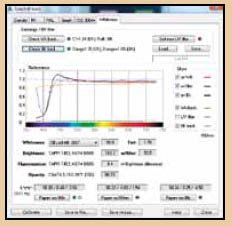articles/Paper/paperwhite-page1
Paper White - what are you looking at? - part 1 of 1 2 3
by Mike McNamee Published 01/02/2012

While writing up the monochrome section of the review of the Canon Pixma Pro-1 we started to discuss the effect of paper 'whiteness' and soon got mired down in jargon. To overcome this we have pulled out the relevant materials and brought it all together in a 'once and for all' which includes measuring paper whiteness and viewing booth topics.
Paper Whiteness
Much has been written in the technical and scientific journals on this topic but sadly there seems to be more heat than light about. Despite the cash that has been lavished on the various national standards technical committees, we still do not have a universally agreed and correlated measure of 'paper whiteness'. By this we mean that a 'whiteness' measured by one scale does not align with a 'whiteness' measured on another. Even within one standard there are a number of parameters which go towards defining the whiteness of a paper. The term whiteness was placed in quotes for a reason, not everybody has the same understanding of white and what it is.
What are CIE Whiteness and Tint?
Whiteness and tint play a similar role to a* and b* for white papers, they are measures of the 'colour' of the paper: • Low values of whiteness correspond to cream shades of white.
• High values of whiteness correspond to blue shades of white.
• Negative values of tint correspond to reddish shades.
• Positive values of tint correspond to greenish shades.
A complete definition of colour using these variables requires use of L* as well as whiteness and tint. It is also particularly important to state the illuminant/observer combination used.
Whiteness and tint are only defined in a limited range of colour space, corresponding to white shades.
Quoted from CIE whiteness and tint of paper and paperboard, technical committee T 562 om-05

"Paper is bought, sold and used primarily indoors. Therefore it is important to assess the 'whiteness' of the paper under similar conditions. When 'white' papers are ranked subjectively, it has been shown that people prefer bluish whites to grayish, yellowish, greenish, or pinkish whites. As a consequence, papermakers often add fluorescent whitening agents or optical brightening agents to enhance the appearance of their papers. The CIE whiteness and tint equations have a blue bias to better quantify what people prefer. It has been shown that CIE whiteness values correlate well with visual whiteness assessment when the UV level of the source approximates that of average indoor lighting (2).
A positive tint value indicates a greenish sample; a negative value indicates a reddish sample. The further the tint value is from zero, the more coloured the sample. The perfectly reflecting diffuser would have a whiteness value of 100 and a tint value of 0. Whiteness and tint values are not appropriate for strongly coloured samples."
The above is totally at odds with a publication by Xerox: "Whiteness
Whiteness is a measurement of light reflectance across all wavelengths of light comprising the full visible spectrum." Small wonder we are confused!
At Professional Imagemaker we use Babel Color to make a variety of measurements (including density, metamerism, whiteness and colour). The Whiteness tools can be used to measure: Whiteness and Tint: Measure a paper's whiteness and tint according to three different formulas.
Brightness: Measure a paper's brightness according to TAPPI T452 /ASTM D985.
You are currently on page 1
- Paper White - what are you looking at? page 1
- Paper White - what are you looking at? page 2
- Paper White - what are you looking at? page 3
1st Published 01/02/2012
last update 09/12/2022 14:57:23
More Paper Articles
There are 2 days to get ready for The Society of Photographers Convention and Trade Show at The Novotel London West, Hammersmith ...
which starts on Wednesday 14th January 2026





